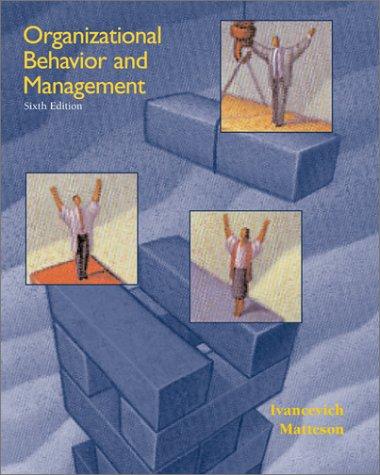Question
detailed explanation yy Consider a market with 3 firms and the following demand from consumers P = 110-Q. Each independent firm has the same fixed
detailed explanation yy
Consider a market with 3 firms and the following demand from consumers P = 110-Q. Each independent firm has the same fixed cost F but different constant marginal costs: c = 5, c = 5, and c = 4. There is no capacity constraint.
(a) What is the market equilibrium of this oligopoly (prices, quantities, benefits, consumers surplus, total surplus)? (b) Consider that firms 2 and 3 merge. What is the market equilibrium after the merger? (c) What are the consequences of such a merger? How does it depend on F ?
1) Discus 2 determinants of Supply example: using coffee beans Draw a Diagram to show
2) discuss the effect of indirect taxes and subsidies on supply
3) Difference between quantity demand and shift in Demand... draw a graph to show.
4) Explain the price mechanism and how resources and allocated... draw a graph to show
5) Maximum prices and how government can shift the supply curve.. draw a graph
6) explain the community surplus relation between social cost and social benfit.. draw a graph to show
72. CornGrower is going to sell corn in one year. In order to lock in a fixed selling price, CornGrower buys a put option and sells a call option on each bushel, each with the same strike price and the same one-year expiration date. The current price of corn is 3.59 per bushel, and the net premium that CornGrower pays now to lock in the future price is 0.10 per bushel. The continuously compounded risk-free interest rate is 4%. Calculate the fixed selling price per bushel one year from now. (A) 3.49 (B) 3.63 (C) 3.69 (D) 3.74 (E) 3.84
73. The current price of a non-dividend-paying stock is 100. The annual effective risk-free interest rate is 4%, and there are no transaction costs. The stock's two-year forward price is mispriced at 108, so to exploit this mispricing, an investor can short a share of the stock for 100 and simultaneously take a long position in a two-year forward contract. The investor can then invest the 100 at the risk-free rate, and finally buy back the share of stock at the forward price after two years. Determine which term best describes this strategy. (A) Hedging (B) Immunization (C) Arbitrage (D) Paylater (E) Diversification
74. Consider an airline company that faces risk concerning the price of jet fuel. Select the hedging strategy that best protects the company against an increase in the price of jet fuel. (A) Buying calls on jet fuel (B) Buying collars on jet fuel (C) Buying puts on jet fuel (D) Selling puts on jet fuel (E) Selling calls on jet fuel
75. Determine which of the following risk management techniques can hedge the financial risk of an oil producer arising from the price of the oil that it sells. I. Short forward position on the price of oil II. Long put option on the price of oil III. Long call option on the price of oil (A) I only (B) II only (C) III only (D) I, II, and III (E) The correct answer is not given by (A), (B), (C), or (D)
Step by Step Solution
There are 3 Steps involved in it
Step: 1

Get Instant Access to Expert-Tailored Solutions
See step-by-step solutions with expert insights and AI powered tools for academic success
Step: 2

Step: 3

Ace Your Homework with AI
Get the answers you need in no time with our AI-driven, step-by-step assistance
Get Started


